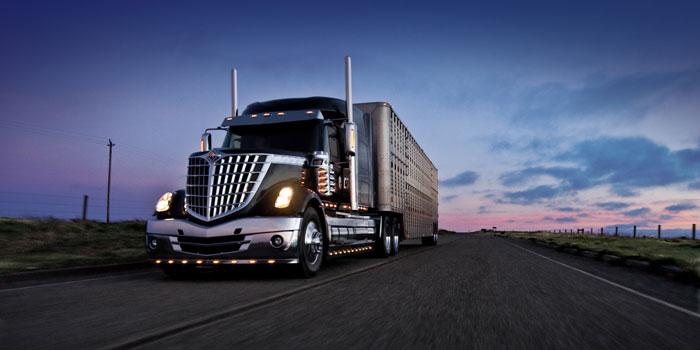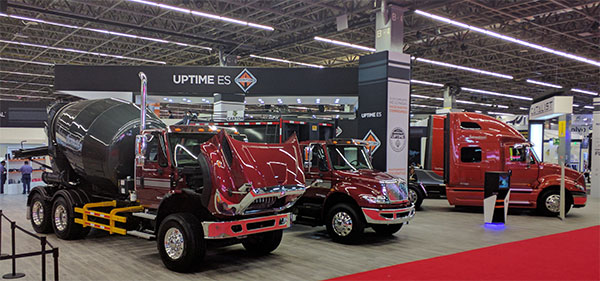More than 10 billion tons of freight are transported by over-the-road trucks each year. And today, just-in-time delivery is included on most delivery contracts and the key to being profitable is to keep all trucks transporting goods for as much time as possible. Needless to say, a lot is riding on speed of service, constant technician training in new technologies and quality repair work. As a fleet service manager, that responsibility falls to you. Knowing what service providers you can partner with and when a service situation calls for outside help, as well as ensuring that the service is completed quickly and correctly, requires time and research. Discovering which service option best fits your fleet is one of the first steps that should be taken.
Service options and providers
Fleets that run their own service locations can choose between partnering with a dealer service location or an independent truck repair location. As with any business decision, there are advantages to each choice.
Dealer: This is a population option chosen by fleets for a majority of service repair scenarios. Many dealers offer more than warranty solutions and often have nationwide networks, making the search for a repair location easier and faster. Other benefits to dealer service include consistent pricing, trained technicians, proper tools and repairs that are usually backed by an OEM.
Some OEMs even offer extended service support through their own service provider partners. International Truck, for example, recently entered an agreement with Love’s Travel Stops to provide quick and readily available roadside service to truckers. This partnership adds more than 315 Love’s Truck Tire Care and Speedco locations and more than 1,000 technicians to Navistar’s International service network. Most Love’s and Speedco service locations will soon be authorized to complete service work covered by a Navistar-issued new-product warranty, as well as the company’s extended warranties and used truck warranties.
Independent repair shop: Having a relationship with an independent repair shop can be a positive, but a lot of research should be done upfront to find the right fit for your fleet. Two of the main factors to consider are hours of operation and location. You want to ensure that if a truck breaks down halfway across the state, an independent service provider can complete any required repairs. Here are a few other aspects to research:
- Hours of operation;
- Speed of service;
- Consistency of work and pricing;
- Number of service bays;
- Number of technicians and their levels of expertise;
- Technician training;
- Ability to digitally track maintenance; and
- Availability of equipment.
Finding a trustworthy independent repair shop
You’ve taken the first step toward vetting an independent service provider, so let’s take it to the next level. Some of the most important steps include:
- Ensuring that the repair shop has proper tools and training to care for your specific fleet can make all the difference when it comes to quality labor and repairs.
- Confirming that the service is responsive. Being stuck in a situation where you need an emergency repair but cannot contact your service can leave you, your driver and your truck high and dry. Just like with any basic relationship, communication is key.
- Making sure the technicians are accurate in estimating completion time for repairs. If a technician says the repair will take a day but it takes two, you are now twice as behind as you had originally planned. Accurate estimates for repairs fall under this category, as well, to ensure that the budget doesn’t get out of hand.
- Determining their process for handling a warranty if a component they install fails when the truck is in another state and can’t be brought back to them. Having peace of mind that you won’t be out thousands of dollars for a repair that should have been warrantied is important.
Third-party service providers: Are they worth it?
Relying on third-party service providers often depends on the type of repair that needs to be done. Repairs such as headlight replacements, minor fluid leaks, minor electrical repairs, brake or tire repairs can usually be handled quickly and without issue. These types of repairs rarely require someone who is familiar with a specific brand of trucks. More complicated repairs or major component failures will likely require a qualified, skilled technician with all the proper tools and the benefit of regular OEM training. Finding a service provider who will provide this level of technicians just requires research to find the shops that best align with your fleet.
How to work with a third-party service provider
Let’s say you have decided that working with a third-party service provider is the best decision for your fleet. After researching, you have found a few services you believe could be good candidates. You set up the initial meetings and now it is time to pick.
One of the biggest aspects that should influence the decision is whether the needs of the fleet and the services offered fall on the same page. Communication between the fleet manager and service provider needs to be established from the get-go. Without this, it cannot be guaranteed that both parties will be in complete understanding of what lines the contract draws. It also forms trust between the parties, a necessity if you are willing to put your entire fleet’s health in the hands of one repair provider.
The information shared between the fleet manager and service provider is also something to take into consideration. Current and future needs should both be brought up. Will more trucks be added throughout the duration of your service contract? How will the service provider take on the extra repair and maintenance work? If a provider is asking for something that does not directly relate to repairs, maintenance or billing, be cautious about what information is revealed.

Service partnerships
Another aspect of service that many companies are looking into is the benefits of service partnerships. Many fleets and companies ponder whether they are worth the money, time and commitment. These contracts usually require a lot of understanding into what exactly a specific fleet’s needs are and finding a service provider who can meet those needs. Making this decision is a large investment and will make a significant difference to the overall well being of your fleet.
The fleet manager needs to consider the life cycle of the truck, how many repairs can be done in-house, the risk tolerance for major repairs and repair trends and their relationship to operating costs. The last aspect that some fleets don’t always consider is where the truck will be operating and whether things such as air conditioning or electrical repairs need to be a large part of the contract.
Fleet managers need to be on the lookout for a few pitfalls when it comes to drawing up a service partnership. One of the most common problems encountered tends to be the exact scope of repairs the service provider will handle. Will you have regularly scheduled fleet repairs and maintenance? What parts and services will be directly covered under the contract? Knowing what your fleet needs and how to negotiate it into the contract can be the difference between a smooth operation and possibly being charged for maintenance you did not intend to have done.
Knowing when to renegotiate is also key. There is nothing wrong with going back to the drawing board to redetermine both what the fleet needs and what the service provider can handle. The subject of payment can always be renegotiated too. The terms of payments and invoices should be clearly outlined without room for misinterpretation.
The biggest challenge is usually communication. Each fleet has different expectations and guidelines on how repairs are expected to be handled and when updates are required. Likewise, each repair location has processes they follow when diagnosing and repairing a truck. If those guidelines and processes are not understood by either party early in the repair process, both parties can become frustrated, which usually slows the repair.
After the warranty expiration
When a warranty expires, fleets usually need to become more involved in negotiating the repairs, regardless of who is executing the repair. Finding value for the repair work being done can save money but can also take time. Everything from warranty coverage on the repair, estimates and pricing becomes part of the process for the fleet manager. If a truck can’t be repaired at a dealer, fleets who have in-house warranty agreements with their OEM can make some repairs in-house and receive reimbursement for those repairs. If that isn’t an option, the fleet will need to check with their OE representative to see what options are available.
There are many options when it comes to caring for your fleet, regardless of size. Whether you decide to invest in an in-house operation, rely on a dealer or investigate independent repair shops, initial research will be the key to success. Asking questions to find what best fits your fleet and having a plan in place will guarantee operations run smoother.
John Crichton is the director of fleet support for Navistar Inc., where he leads a team of managers focused on developing solutions to problems that contribute to downtime and increased operating costs for large fleets.
This article was originally published in Fleet Service Technology, August 2019.














